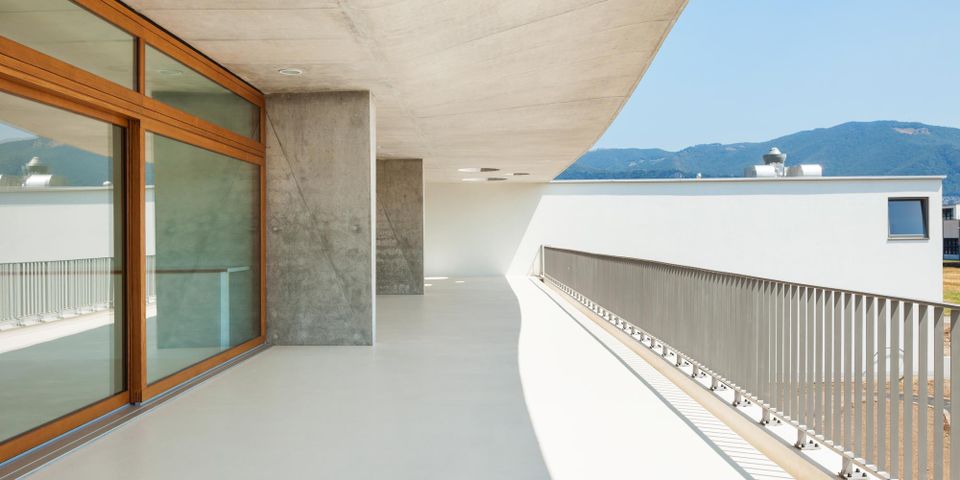
Balconies are excellent additions to your building, providing places for fresh air and seating. Water damage in these areas can be problematic, but there are ways to mitigate trouble. Here’s how to recognize an issue and how balcony and breezeway waterproofing can help.
What Are the Causes & Signs of Balcony Water Damage?
When water gets inside, it can cause tremendous damage to both the appearance and structural integrity of the balcony. Unfortunately, water problems are often the result of installation issues, making balcony and breezeway waterproofing an effective way to remedy the situation.
Slope is critical for filtering water away from the building and off the balcony. During construction, contractors must slope the flooring away to avoid pooling.
The longer water is left to linger, the more likely it will get into trim, posts, railings, and siding. Trim must be primed to stop absorption since these areas tend to cover open joints that will let in water.
Flashings are vital around features such as windows and doors, as well as lighting and piping. Flashing acts as a channel for water that gets behind finishes and trims, ensuring the liquid drains.
Sealant fills in gaps and acts as an extra layer of protection around flashing and joints, but when compromised or missing, water has easy access. Sealant should be inspected every few years.
 Signs that water has already caused an issue include leaks around doors and windows, problems opening these features due to swelling wood, and damaged paint. You may also notice stains on balcony finishes and that wood components like trim are splitting, soft, or growing mold and mildew. Weak railings and posts are also indicators of moisture damage.
Signs that water has already caused an issue include leaks around doors and windows, problems opening these features due to swelling wood, and damaged paint. You may also notice stains on balcony finishes and that wood components like trim are splitting, soft, or growing mold and mildew. Weak railings and posts are also indicators of moisture damage.
How Can You Waterproof a Balcony?
New and old construction can benefit from balcony and breezeway waterproofing. First, determine if there’s already waterproofing in place that must be restored or if this is a new application. Contractors can then determine the condition of the joints and slope.
Waterproofing membranes are the easiest way to protect balconies from water damage. Once flashings and flooring are repaired and sealed, membranes are laid out and then topped with the surface flooring, which is often concrete.
Metal T-bars are installed along the ends as screeds to keep the installation level. T-bars are most commonly set above flashing to help with drainage.
For balcony and breezeway waterproofing in Largo, contact Pro-Crete Systems of Florida. The concrete contractor offers extensive services at affordable rates, from roof deck insulation to traffic coatings. They also install acoustic underlayments for better soundproofing in your building. Call (727) 526-8090 for an estimate, or visit them online to view a gallery of their work.
About the Business
Have a question? Ask the experts!
Send your question

